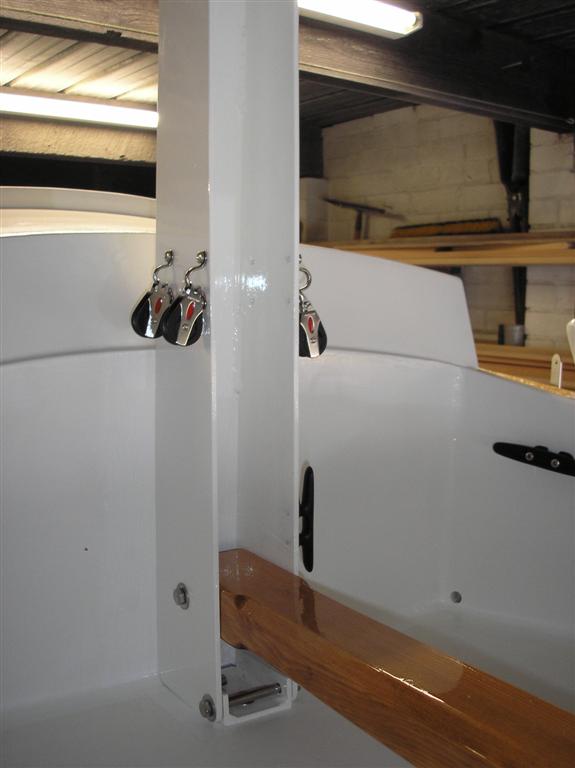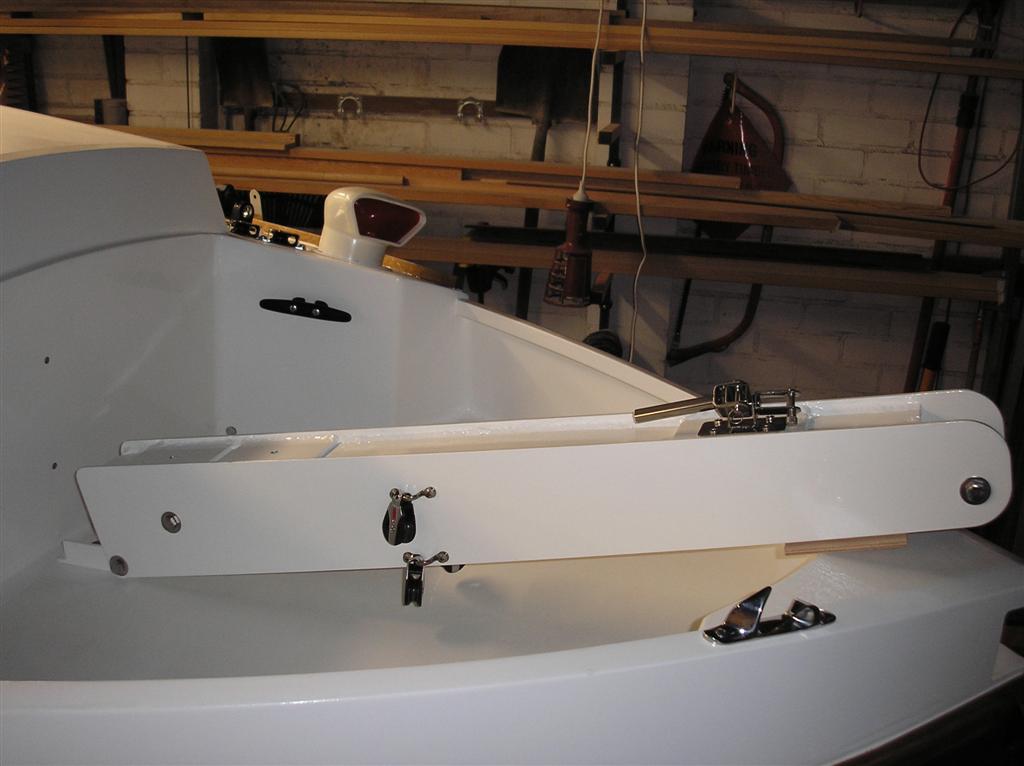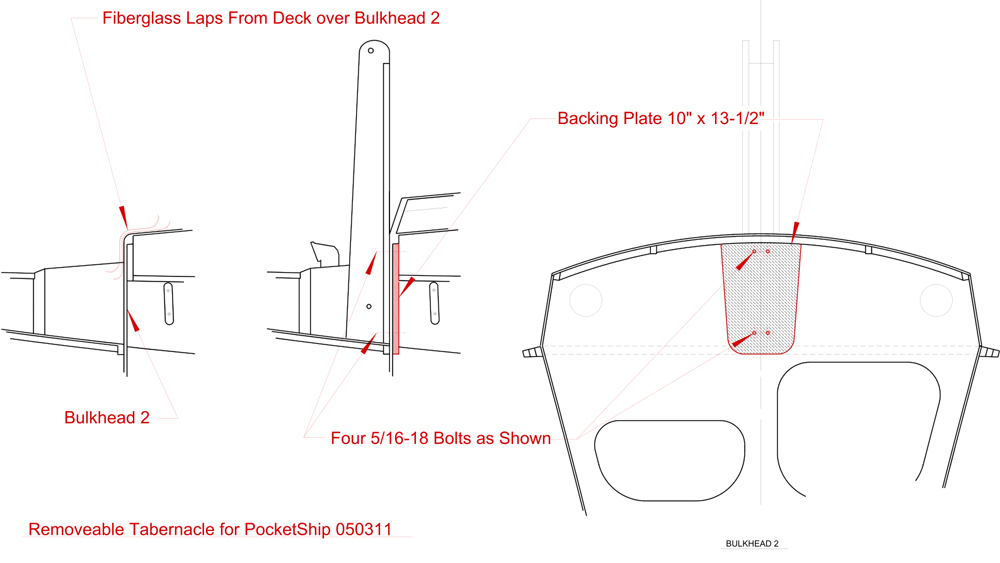The best tabernacle I've seen yet was fabricated by Bob in Sydney, Australia. It's aluminum and beautifully executed. He writes: "It's 5mm 5083 marine alloy, laser cut, welded, with all the fittings tapped and screwed on. I'm using a 10mm alloy backing plate behind #2 bulkhead in the cabin, so as I said in the forum, I think I'll lose the stick before this pulls out."
A few photos:

- Tabernacle 1.JPG (41.54 KiB) Viewed 14332 times

- Tabernacle 2.JPG (70.25 KiB) Viewed 14310 times
All that aside, it definitely doesn't need to be aluminum to work! PocketShip #1 has probably been sailed harder than any PocketShip on the planet, including in truly abusive conditions, and it's persevering with an 18mm cypress tabernacle.
I made up this drawing about 18 months ago as a suggestion for reinforcement in a setting with a removable tabernacle. One of the most important things in the drawing is acknowledging that the cabin roof MUST be fastened securely to Bulkhead 2 to help with the loads. The one failure of a tabernacle I know of involved the bulkhead getting loose from the cabin roof. What's required is strong blocking in the corner between Bulkhead 2 and roof, as well as plenty of fiberglass turning the corner as shown in the drawing. And, ultimately, making sure that the side shrouds are taking up the offwind loads well before the mast starts trying to lever the tabernacle out of the boat.

- PocketShip Removable Tabernacle.jpg (136.46 KiB) Viewed 14400 times